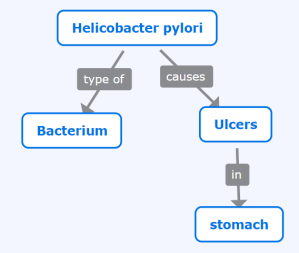3 Brain-Based Strategies That Encourage Deeper Thinking
Retrieval practice, elaboration, and concept mapping help students make richer, more meaningful connections between ideas.
Your content has been saved!
Go to My Saved Content.With uncertainty hovering over fall plans, teaching and learning continue to look different from district to district than ever before. While administrators juggle with tough choices, almost every teacher is back to reading, reflecting, and restructuring their lesson plans to keep their learners engaged and learning—and as equitable as possible given the constraints. In this post, I share three strategies, informed by the learning sciences, that teachers can use online or face-to-face to deepen student learning: retrieval practice, elaboration, and concept mapping.
Strategy 1: Retrieval Practice
Retrieval practice, or the practice of remembering, is a robust learning strategy as summarized in a meta-analysis of more than 200 studies published by my colleagues and me. Retrieval practice is when you push yourself to write, tell, or draw what you’ve already learned, and it can be especially helpful for concepts you may not remember as clearly—the process of remembering will help strengthen your memory. Plus, you have the added benefit of identifying what you know and don’t know. Some teachers use this strategy in their classrooms already—maybe you do too. If not, here are two ways to start:
- Create a version of your study guide that has only the questions. Ask students to practice answering them without additional support. Once they’re done, they can share their answers; they can also look up the correct answers, either alone or in groups.
- Use a brain dump. Ask students to write down everything they remember relevant to your question (or the topic) on a piece of paper. You can stop here, or have students compare their work to find gaps, similarities, and differences.
Strategy 2: Elaboration
Elaboration—also known as elaborative interrogation—refers to expanding a concept to be more detailed, allowing our brain to connect multiple concepts to one central idea. The more connections we make, the more likely we are to remember relevant information. Think of the icebreaker “Tell me one fun thing about yourself.” Not only does it help you remember something interesting about a person—they like rocky road ice cream, for example—but you may also think of that person every time you see the flavor. In a learning context, elaboration can often be done by asking questions that require engaging deeply with content. So instead of asking learners to simply memorize information, they can compare and contrast right and wrong answers. This approach is so simple, you likely use it in your class already. Here are two ways to start:
- Ask learners to compare two examples of the same concept or share specific examples. For example, when covering concepts of reusable energy, ask questions such as, “What are three similarities and differences between wind and solar energy?” Use these questions in a discussion board, in a short answer prompt, or to jazz up the thinking quotient of your worksheet.
- Learners can explain the topic out loud to themselves, friends, a sibling, or a parent. You can also incorporate it into group activities—like a jigsaw—or have students role-play as the teacher and explain the topic to the class. For virtual classrooms, Flipgrid is an excellent tool: Students can record themselves reading about a topic and then answering questions like “How do I apply this topic in my life?” For younger students who may need more scaffolding, you can ask a more targeted prompt, like “How do I consume energy every day?”
Putting It All Together: Concept Mapping
Concept mapping combines retrieval practice and elaboration through the process of drawing one’s understanding of relationships between concepts. A map usually contains at least two concepts (nouns), a relationship (verb or concise description), and a directional arrow connecting the concepts. When reading the map, we create mini sentences (excusing poor grammar, of course). For example, a student learning about bacteria can create a concept map that includes any relevant ideas—such as specific types of bacteria (“Helicobacter pylori”) or ways to describe them (“single-celled organism”). This layout allows learners to identify what they know and where the gaps are, in addition to the relationships between concepts. A review of more than 140 experiments suggests that this strategy is superior to rote memorization because it encourages students to make richer, more meaningful connections within a topic.

There are six stages in concept mapping, starting with the instructor providing learners with a specific guiding question.
- Focusing stage: Learners are given or are asked to identify a guiding question—such as “How is ice formed?”—relevant to the current topic.
- Brainstorming stage (making use of retrieval practice): Learners do a brain dump in response to the guiding question, writing down any concepts and ideas that come to mind.
- Organizing stage (elaboration): Learners review their brain dump and pick out concepts that are central to the guiding question, followed by asking themselves, “How are these concepts connected?”
- Layout stage: Learners build their map connecting the concepts with directional arrows showcasing their understanding. At the top of the map, they can start by writing down the main ideas of the topic, and then start connecting words together.
- Linking stage: They complete the first draft of the concept map by labeling the arrows with these descriptions. For example, if they start with the words “ice” and “cold,” they can connect the two with “is.” This encourages learners to think about the relationships between different ideas.
- Revising stage: There is no perfect concept map. Give learners the opportunity to redo and update based on their understanding.
In the past, I’ve done concept mapping with kindergarteners, replacing words with pictures, and it’s so much fun to have them form sentences using images. The goal is to help them retrieve, elaborate, and share their understanding. (I also recommend looking into Dual Coding for Teachers and other resources by Oliver Caviglioli.)
A final tip: You don’t have to do all of these strategies for every topic. Pick and choose, mix and match. Start small and build up. These strategies work because they engage the learner’s attention and encourage them to think more deeply about the content.
